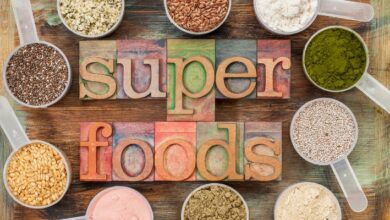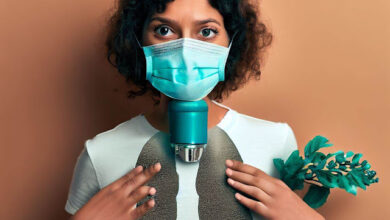Understanding Yeast Infection Symptoms
Yeast infections are a common condition that affects many people, particularly women. They can cause discomfort, itching, and irritation in various parts of the body, including the vagina, mouth, and skin folds. In this article, we will delve into the topic of yeast infection symptoms, including their causes, types, diagnosis, treatment options, prevention, and when to seek medical help.
Definition of Yeast Infection
Yeast diseases, otherwise called candidiasis, are brought about by the excess of a growth called Candida. Candida is a type of yeast that naturally exists in small amounts in our bodies, but certain factors can disrupt the balance of microorganisms, leading to an overgrowth of Candida and subsequent yeast infection.
Factors that Contribute to Yeast Infections
There are several factors that can contribute to the development of yeast infections. These include:
- Weakened immune system: A weakened immune system due to illness or medication can make the body more susceptible to yeast infections.
- Hormonal changes: Hormonal changes during pregnancy, menstruation, or hormonal therapy can create an environment that is conducive to the growth of Candida.
- Antibiotics: The use of antibiotics can disrupt the natural balance of microorganisms in the body, including the beneficial bacteria that help keep Candida in check.
- High-sugar diet: Consuming a diet high in sugar and refined carbohydrates can promote the growth of Candida, as yeast feeds on sugar.
Identifying Yeast Infection Symptoms
Yeast infection symptoms can vary depending on the location of the infection. Here are a few normal signs and side effects to pay special attention to:
Vaginal Yeast Infection Symptoms
- Tingling and bothering of the vagina and vulva
- Thick, white, odorless vaginal discharge
- Pain or discomfort during sexual intercourse
- Redness and swelling of the vulva
Oral Yeast Infection Symptoms
- White patches on the tongue, inner cheeks, or the roof of the mouth
- Soreness and difficulty swallowing
- Cracking at the corners of the mouth
Skin Yeast Infection Symptoms
- Rash or redness on the skin, particularly in skin folds
- Itching, burning, or stinging sensation
- Small, pus-filled bumps
Different Types of Yeast Infections
Yeast infections, in addition to the commonly known vaginal, oral, and skin yeast infections, can also occur in other areas of the body such as the nail beds, digestive tract, and bloodstream. These infections may present with their own specific symptoms and require tailored treatment approaches.
Factors that Increment the Gamble of Yeast Contaminations
Certain factors can increase the risk of developing yeast infections. These include:
- Gender: Women are more susceptible to yeast infections due to hormonal fluctuations, pregnancy, and the anatomy of the female genital tract.
- Diabetes: Uncontrolled diabetes can create a favorable environment for yeast overgrowth.
- Weakened immune system: Conditions that weaken the immune system, such as HIV/AIDS or cancer, can increase the risk of yeast infections.
- Antibiotic use: Frequent or prolonged use of antibiotics can disrupt the balance of microorganisms in the body, leading to yeast infections.
- Birth control: Some forms of birth control, such as oral contraceptives and intrauterine devices (IUDs), can increase the risk of yeast infections.
Methods of Diagnosing Yeast Infections
If you suspect a yeast infection, it’s important to seek a proper medical diagnosis for appropriate treatment. Healthcare providers may use the following methods to diagnose yeast infections:
- Physical examination: A healthcare provider may perform a physical examination of the affected area, such as the vagina, mouth, or skin folds, to identify signs of yeast infection.
- Microscopic examination: A sample of the affected area may be examined under a microscope to detect the presence of Candida yeast cells.
- Cultures: In some cases, a sample of the affected area may be sent to a laboratory for culture to identify the specific type of Candida causing the infection.
- Blood tests: Blood tests may be done to rule out underlying medical conditions that may be contributing to the yeast infection.
Managing Yeast Infection Symptoms
Treatment options for yeast infections may vary depending on the severity and location of the infection. Common treatment approaches include:
- Antifungal medications: Over-the-counter or prescription antifungal creams, ointments, suppositories, or oral medications may be prescribed to kill the Candida fungus and alleviate symptoms.
- Lifestyle changes: Avoiding irritants such as scented products, wearing loose-fitting clothes, practicing good hygiene, and managing underlying conditions like diabetes can help prevent recurrent yeast infections.
- Home remedies: Some people may find relief from yeast infection symptoms using natural remedies such as tea tree oil, probiotics, or boric acid. However, it’s important to consult with a healthcare provider before using any home remedies to ensure safety and effectiveness.
Natural Remedies for Yeast Infections
While there is limited scientific evidence to support the effectiveness of natural remedies for yeast infections, some people may find relief from certain home remedies. It’s important to note that these remedies should be used with caution and under the guidance of a healthcare provider. Here are some common natural remedies that are often suggested for yeast infections:
- Probiotics: Probiotic supplements or consuming probiotic-rich foods like yogurt, kefir, and sauerkraut may help promote the growth of beneficial bacteria in the body, which can help restore the natural balance of microorganisms and prevent yeast overgrowth.
- Tea tree oil: Tea tree oil has antifungal properties and can be diluted and applied topically to the affected area. However, it should never be ingested or used undiluted as it can cause skin irritation.
- Garlic: Garlic has natural antifungal properties and can be consumed orally or applied topically to the affected area. However, there is limited scientific evidence to support the effectiveness of garlic as a treatment for yeast infections, and it may cause skin irritation in some cases.
Conclusion
In conclusion, understanding yeast infection symptoms is crucial for timely diagnosis and treatment. Yeast infections can occur in various parts of the body, and their symptoms may differ depending on the location and severity of the infection. Identifying the risk factors, seeking a proper medical diagnosis, and following recommended treatment approaches, including antifungal medications and lifestyle changes, can help effectively manage yeast infection symptoms and prevent a recurrence.




